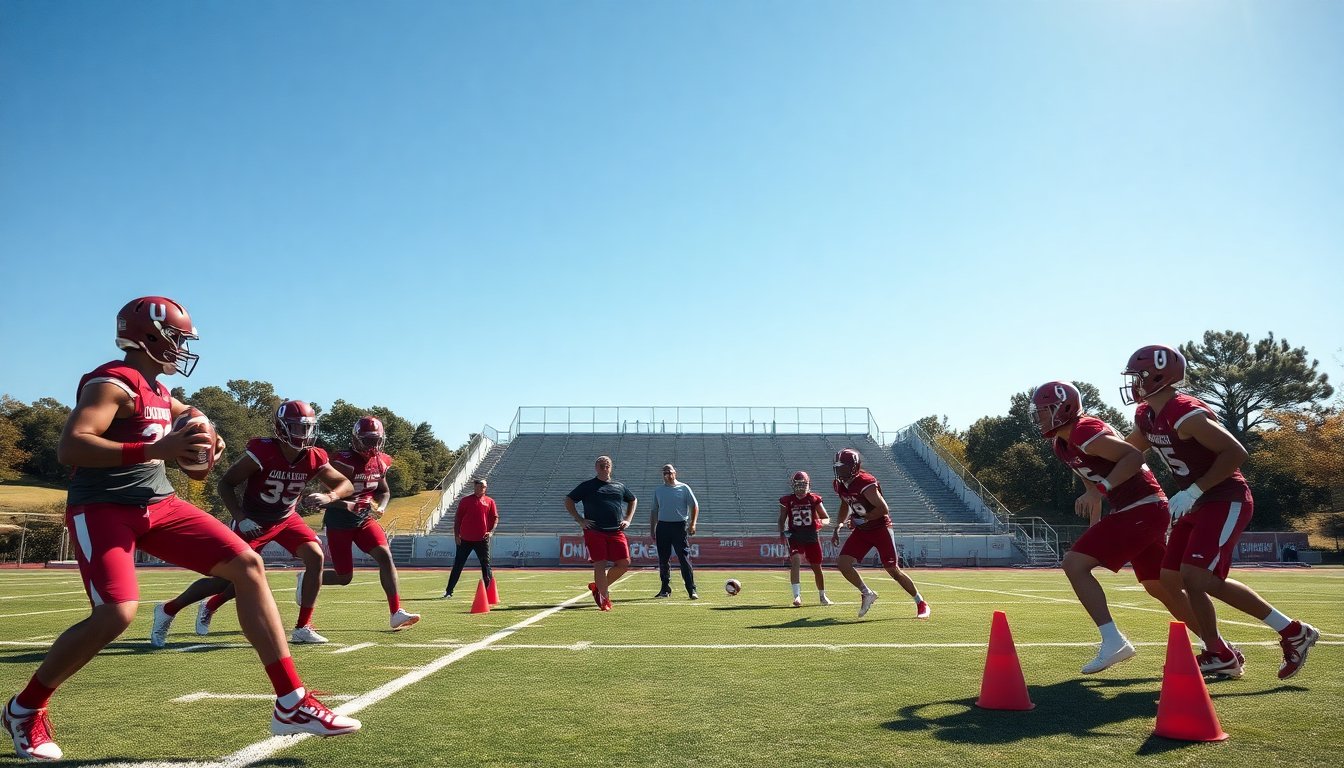Table of Contents
Oklahoma football has undergone a significant transformation, positioning itself as a strong contender in the Southeastern Conference (SEC). This change reflects a strategic shift aimed at aligning the program with the performance and professionalism standards seen in the NFL. The Sooners are embracing a model that merges traditional collegiate athletics with professional football dynamics.
The leadership changes initiated by Oklahoma’s athletic department signal a new direction. A notable adjustment is the introduction of a General Manager (GM) who operates alongside the head coach. This dual leadership structure is designed to enhance decision-making and streamline operations, ensuring that coaching and player management are synchronized.
The new leadership model
The selection of a GM marks a pivotal move for Oklahoma football, reflecting a growing trend in college sports where teams adopt NFL-like strategies. This role oversees recruiting and player development while also playing a critical part in contract negotiations and roster management. With a dedicated individual focused on these aspects, the coaching staff can prioritize on-field performance, fostering a more efficient working environment.
Insights into the GM’s responsibilities
The responsibilities of the GM extend beyond administrative tasks. This individual will lead talent scouting and roster building, aiming to implement a system that mirrors the operational efficiency of professional teams, particularly drawing inspiration from the Philadelphia Eagles, known for their innovative player management and organizational structure.
Additionally, the GM will work closely with the head coach to ensure recruits align with the team’s strategic vision and culture. This collaboration is essential for maintaining cohesion and promoting a winning mentality throughout the program.
Revamping the athletic department
As part of this comprehensive overhaul, Oklahoma is actively searching for a new athletic director. This search is led by a seasoned professional, the former CEO of AT&T, who brings extensive experience in corporate management and leadership. The involvement of such a prestigious figure underscores the seriousness with which Oklahoma is approaching this transition.
Strategic recruitment and vision
A primary objective for the new athletic director will be identifying and recruiting a head coach who aligns with the program’s ambitious vision. This individual must have a strong coaching track record and an understanding of the nuances of operating within the SEC, often regarded as the most competitive conference in college football.
The search for a head coach aims to find someone capable of elevating the Sooners to new heights. With effective leadership, the program seeks to cultivate a culture of excellence that rivals the best teams in the nation. This is essential for attracting top-tier talent and ensuring Oklahoma remains a powerhouse in college football.
Adapting to the SEC landscape
The transition to the SEC has posed challenges for many teams, but Oklahoma appears prepared to navigate this landscape effectively. By adopting a professional model, the Sooners are setting themselves up to compete against some of college football’s fiercest rivals. The blend of collegiate spirit and professional rigor could provide a roadmap for success.
As the Sooners continue to implement these changes, integrating a GM, searching for a new athletic director, and focusing on operational excellence are all crucial components of their strategy. If executed effectively, this comprehensive overhaul could see Oklahoma football not only thrive in the SEC but also emerge as a dominant force in the college football landscape.


